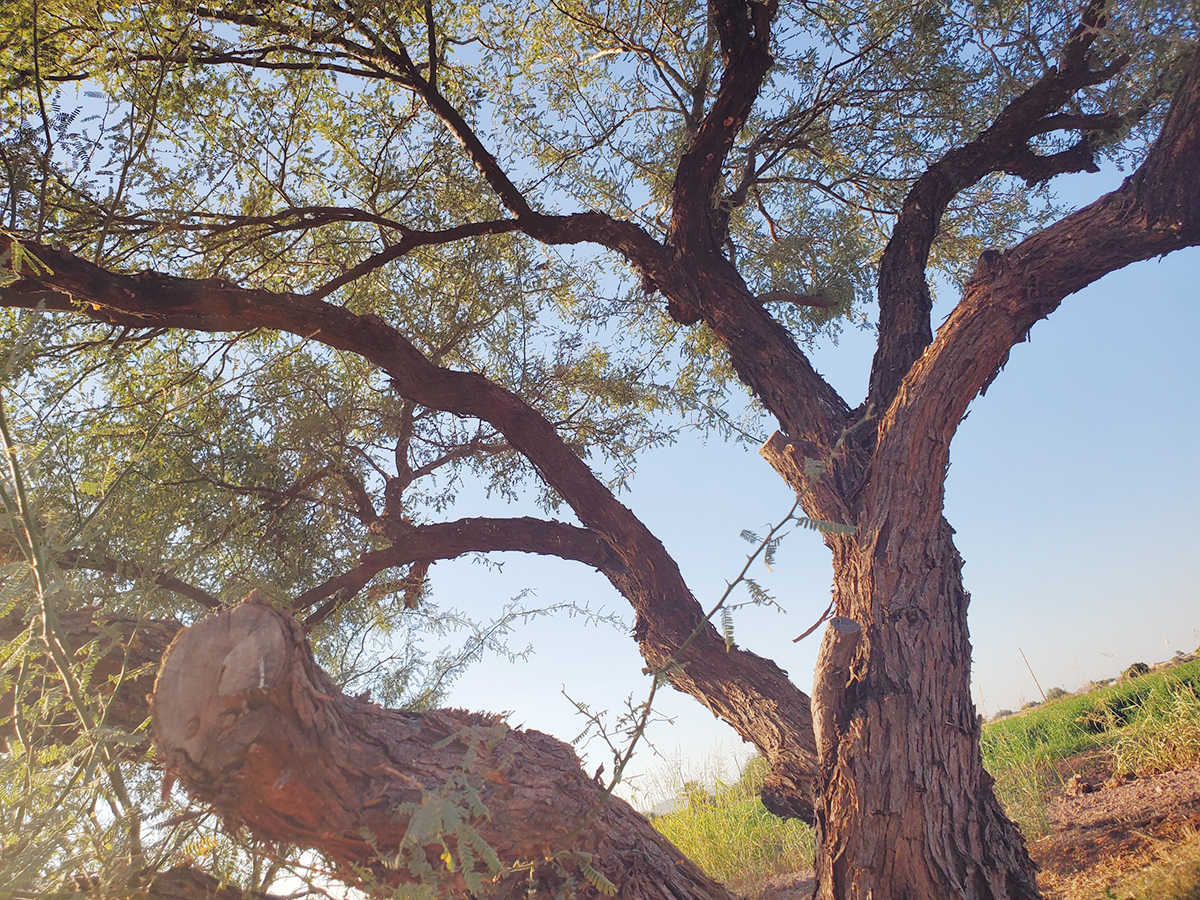VIEWS: 5840
November 4, 2020Mesquite Usage by the O’odham and Piipaash
While walking here in the Valley, we often see mesquite trees with their seed pods dried up on the ground and don’t give them very much thought. However, those mesquite pods are a vital food source that has sustained the O’odham and Piipaash for hundreds of years. Along with many other indigenous foods, the mesquite has a robust history that the O’odham and Piipaash have knowledge of. Community Garden Coordinator Jacob Butler of the Salt River Pima-Maricopa Indian Community’s Cultural Resources Department shared some history of the mesquite tree and the multiple uses for the tree and its pods.
“Mesquite was a staple food for the people [in centuries past] and today is still regarded with high importance,” Butler said. “All stages of the mesquite pod can be eaten, from the catkin to the dried pod. The wood [from mesquite trees] is a fuel source still used today for cooking and social fires. The wood is also used for many utilitarian purposes; one cool one is the spoons that were made from [mesquite wood] traditionally. The tree’s usap, or sap, can be eaten as a lightly sweet treat or used as a medicine to heal and disinfect small cuts and scrapes. The sap can also be used as an adhesive and paint.
“The pods would be used in a few ways,” Butler continued. “They could be ground and made into ash cakes or sun bread. They could be eaten as chuior pinole (ground to a powder, seeds and all) and washed down with water. The pods can be broken and added to water to make a sun tea; the tea is awesome and pretty hard to mess up. Unless you boil it [before you drink it], it can [cause digestive problems]. [Mesquite pods] can even be chewed on as a snack or to provide a quick carb boost when out hiking or running.”
Flour for cookies, pancakes and bread, and sweeteners, are the most common uses of mesquite pods today. Grinding mesquite pods makes mesquite flour for baking; the flour is a good substitute for or additive to reduce usage of white flour. The taste is earthy and subtle; some people can’t notice it’s in their pastries. The best way to know if a mesquite pod is safe to eat is to chew on it. If the pod dries out your mouth, it is not edible. If the pod tastes sweet, it is safe to incorporate into a [recipe].
Looking from afar, it may seem that all mesquite trees are the same. However, Butler explained that there are several different mesquite tree species in the Valley, including the Chilean mesquite (Prosopis chilensis), the velvet mesquite (Prosopis velutina), the screwbean mesquite (Prosopis pubescens) and the honey mesquite (Prosopis glandulosa). The honey mesquite is found more to the south of the Valley, closer to the Tohono O’odham Nation.
“The Chilean mesquite is preferred by landscapers because they grow fast,” Butler said. “The shrub creates giant pods, but they are not considered edible. They dry out your mouth and throat and can mix with our native mesquite trees. I would advise not planting them for these reasons.”
The O’odham and Piipaash have eaten mesquite pods for a long time. While the taste can be described as a subtle sweetness, the pod itself has many benefits, as Butler explained further.
“The pod, while relatively sweet, is very low on the glycemic index,” Butler said. “[It’s] a sweet treat for people who cannot process sugar very well. The use or practice of traditional relationships with food is important to our physical health as well as the retention of our very special cultural heritage that has sustained the people from time immemorial and directly related to our ability to practice self-governance under tribal sovereignty.”
For a video demonstrating how to bake a delicious mesquite banana bread, check out the O’odham Action NewsFacebook page and Instagram @oodhamactionnews.







